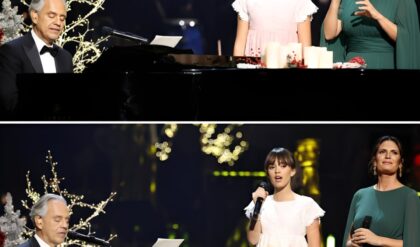In the landscape of modern horror, few directors have made as swift and impactful an entrance as Zach Cregger. Following the surprise success of his 2022 debut Barbarian, which cleverly subverted audience expectations with its unpredictable narrative twists, Cregger returns with Weapons (2025), a film that amplifies his signature style into an ambitious, multi-layered epic. Released in theaters on August 8, 2025, Weapons explores the eerie underbelly of suburban America through a chilling mystery: the overnight disappearance of 17 children from a single elementary school class at exactly 2:17 AM. Drawing comparisons to Paul Thomas Anderson’s Magnolia reimagined as a horror thriller, the film weaves grief, paranoia, and supernatural dread into a tapestry that keeps viewers guessing until its explosive, gore-soaked finale. This article analyzes the film’s content, cast, and plot twists, highlighting why Weapons stands as one of the most haunting and innovative horror experiences of the year.
Content Analysis: Themes and Narrative Structure
Weapons is a slow-burn psychological horror that transforms the mundane familiarity of suburban life into a breeding ground for terror. Set in the fictional town of Maybrook, the story begins one month after the inciting incident, where doorbell camera footage captures the children running silently into the night with their arms outstretched like airplanes—a haunting image that Cregger lingers on to build immediate unease. The film’s core mystery revolves around why these kids vanished and why one student, Alex Lilly, was spared. This setup serves as a springboard for exploring deeper themes of community division, parental paranoia, and the fear of the unknown.
Core Themes
-
Suburban Isolation and Paranoia: Cregger masterfully depicts how tragedy exposes the cracks in idyllic small-town life. The disappearance ignites suspicion, with parents turning on teacher Justine Gandy, labeling her a “witch” and scapegoating her for their grief. This reflects real-world anxieties about hidden dangers in everyday settings, echoing the isolation of the COVID era or school shooting allegories without overt preachiness. The suburbs, with their manicured lawns and dark, quiet streets, become a character in themselves—places where secrets fester behind closed doors.
Grief and Moral Ambiguity: The film delves into the psychological toll of loss, particularly through characters like Archer Graff, whose desperation drives him to extreme actions. Cregger avoids black-and-white morality; protagonists are flawed—Justine battles alcoholism, Paul hides personal deceptions—making their quests for truth feel authentically human and fraught with internal conflict.
The Supernatural vs. Human Evil: Blending fairy tale elements like the Pied Piper with modern horror, Weapons questions whether the horrors stem from otherworldly forces or human failings. A mysterious figure tied to Alex’s family introduces spiritual secrets, but the film grounds its scares in relatable fears, such as parental failure or communal betrayal.
Narrative Structure
Cregger structures Weapons as a non-linear anthology within a single continuity, divided into chapters named after key characters. This “Pulp Fiction”-esque approach resets the timeline with each perspective, recontextualizing earlier events and building suspense through gradual revelations. Justine’s chapter establishes the mystery and paranoia; Archer’s shifts to investigative thriller; Paul’s adds personal drama; James injects dark humor; Marcus provides institutional insight; and Alex’s ties it all together. Running 129 minutes, the film maintains a deliberate pace, using cinematographer Larkin Seiple’s dynamic camera work—often placing viewers in pursuit or over-the-shoulder shots—to heighten immersion. Editor Joe Murphy’s cuts deliver comedic punctuation amid the dread, blending tones seamlessly. While some critics note occasional pacing lulls in the final act’s expositions, the structure ensures every twist feels earned, culminating in a finale that’s equal parts hilarious, gruesome, and disturbing.
The soundtrack, mixing eerie silence with a memorable score, amplifies the film’s mood swings from tense quiet to chaotic violence. Overall, Weapons critiques how societies weaponize fear and ignorance, refusing easy answers and leaving some ambiguities to linger like urban legends.
Cast Analysis
Weapons boasts an ensemble cast that elevates its character-driven narrative, with each actor bringing nuance to flawed, relatable roles. Cregger’s direction allows for deep emotional exploration, making the horror feel personal.
-
Julia Garner as Justine Gandy: Garner delivers a powerhouse performance as the beleaguered teacher, blending vulnerability with determination. Her portrayal of Justine’s unraveling—grappling with guilt, harassment, and addiction—anchors the film’s emotional core. Garner’s raw intensity shines in confrontations, making her a sympathetic yet imperfect protagonist.
Josh Brolin as Archer Graff: Brolin embodies quiet rage as the grieving father turned amateur detective. His grounded, brooding presence contrasts with the film’s wilder elements, and his chemistry with Garner in key scenes adds depth to themes of shared trauma. Though some wish for more screen time, Brolin’s subtlety makes Archer’s desperation palpable.
Alden Ehrenreich as Paul Morgan: Ehrenreich brings charisma to the conflicted cop, entangled romantically with Justine while hiding his own secrets. His arc, blending buddy-cop humor with personal turmoil, provides tonal relief without undermining the tension.
Austin Abrams as James: As the meth-addicted thief, Abrams injects chaotic energy and comic relief. His character’s accidental discoveries propel the plot, and Abrams balances humor with pathos, making James more than a side quest.
Benedict Wong as Principal Marcus: Wong’s empathetic portrayal adds warmth and procedural insight, highlighting institutional failures amid crisis.
Cary Christopher as Alex Lilly: The young actor impresses with subtle restraint, conveying quiet desperation that hints at deeper horrors.
Amy Madigan as Gladys: Madigan steals scenes as the enigmatic, clownish aunt whose sickly appearance and bizarre behavior fuel nightmares. Unrecognizable under makeup, her performance is pitch-perfect, blending banality with evil in a role that’s both terrifying and unforgettable.
Supporting players like June Diane Raphael and Toby Huss round out the ensemble, contributing to the film’s lived-in world. The cast’s chemistry, particularly in overlapping stories, heightens the emotional stakes, making Weapons as much a character study as a horror thriller.
Plot Twists: The Haunting Revelations That Linger
Spoiler Warning: This section discusses key twists; proceed with caution.
Weapons thrives on misdirection and revelation, with twists that reframe the narrative and amplify its horror-comedy blend. Cregger’s structure ensures surprises unfold organically, often subverting expectations built from prior chapters.
-
The Gladys Reveal: The film’s biggest shock is Gladys, Alex’s aunt, as a hypnotic, witch-like entity controlling the children. Appearing in nightmares with a grotesque, clown-faced visage, she’s revealed to be draining or possessing them, tied to ancient folklore. This twist shifts from psychological thriller to supernatural horror, recontextualizing early doorbell footage as a Pied Piper-esque trance.
Personal Connections and Betrayals: Justine discovers her own ties to Gladys through dreams, while Archer’s investigation uncovers community cover-ups. A twist reveals Paul’s infidelity intersects with the mystery, leading to a brutal confrontation. James’s theft uncovers Gladys’s lair, flipping his comedic arc into terror.
The Finale Onslaught: The climax erupts in absurd, gory chaos as characters converge on Gladys’s house. Twists include hypnotic possessions turning allies violent, a floating alarm clock gun, and Gladys’s ceiling jumpscare. The ending’s blend of humor (characters’ “WTF” reactions) and horror (visceral deaths via forks, peelers) is wildly inventive, though some ambiguities (Gladys’s origins) remain unresolved for atmospheric effect.
Narrative Recontextualizations: Each chapter twists prior events; e.g., a door’s significance escalates from mundane to threatening. The opening narration’s exclusion of details foreshadows omissions, adding meta-layers.
These twists, praised for being earned rather than cheap, evoke squirms and laughs, making Weapons rewatchable despite its shocks.
Production and Style
Produced by New Line Cinema with a $38 million budget, Weapons showcases elevated craft. Seiple’s cinematography captures suburban eeriness with dynamic angles, while Murphy’s editing crafts comedic-horrific beats. Cregger’s comedy background infuses black humor, balancing gore with levity. The practical effects shine in the finale, evoking The Crazies and fairy tales.
Reception and Anticipation
Weapons has garnered acclaim, with critics calling it 2025’s best horror. Fans on X rave about its twists and finale, noting even foreknowledge doesn’t diminish impact. Ratings average 9/10, praising ambition over minor pacing issues.
Conclusion
Weapons cements Zach Cregger as a horror visionary, blending innovative structure, stellar performances, and haunting twists into a modern classic. Its exploration of suburban dread and human frailty lingers long after the credits, proving that the scariest monsters hide in plain sight. A must-see for genre fans, it’s a rollercoaster of terror and triumph.





